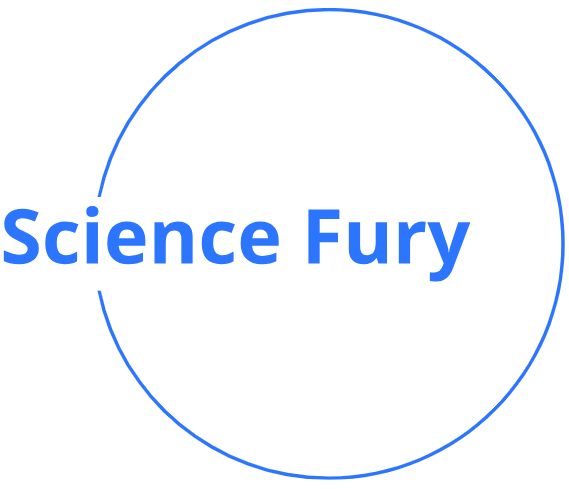Imagine a rainbow, not just of colors we can see, but of invisible energies woven into the very fabric of the cosmos. This is the electromagnetic spectrum, a symphony of waves encompassing everything from the gentle hum of radio waves to the searing fury of gamma rays. Buckle up, as we embark on a fascinating journey through this spectrum, unlocking its secrets and revealing its profound impact on our world.
Electromagnetic Spectrum: Unpacking the Spectrum’s Symphony
The electromagnetic spectrum is the grand orchestra of energy, where each instrument – a wave – sings in its unique pitch, defined by its frequency or wavelength. The higher the frequency, the shorter the wavelength and the more energetic the wave.

Think of a radio tuning dial: as you turn it, you’re selecting different frequencies, letting you tap into different stations. Similarly, within the spectrum, each band boasts distinct properties and plays a crucial role in the universe’s grand play.
The Low End: Rhythms of Radio and Microwaves
Let’s start with the bassline of the spectrum: radio waves. These long, slow-moving giants, extending from kilometers to meters in wavelength, permeate our everyday lives. From radio broadcasts and TV signals to Wi-Fi and cell phone communication, radio waves weave a web of connectivity, keeping us informed and entertained.
Next up are the microwaves, with slightly shorter wavelengths and higher energy. These culinary maestros heat your popcorn and defrost your dinner, while also guiding weather radars and peering into the faint whispers of the universe with radio telescopes.
The Mid-Range: Where Light Takes Center Stage
As we move up the spectrum, we reach the heart of the show: visible light, the band our eyes perceive as a mesmerizing display of colors. From the warm glow of the sun to the vibrant hues of nature, visible light illuminates our world, painting it with the brushstrokes of reality.
Beyond the visible lies the realm of infrared radiation, invisible to our eyes but felt as warmth on our skin. Infrared cameras peer through darkness, revealing the heat signatures of animals and even distant stars.
The High End: Ultraviolet, X-rays, and Gamma Rays – A Stellar Performance
Now the tempo picks up. Ultraviolet (UV) radiation, though often hidden from our direct view, plays a vital role in life, regulating vitamin D production and illuminating coral reefs. However, excessive UV exposure can be harmful, causing sunburns and even skin cancer.
Next come the penetrating X-rays, used in medical imaging to reveal hidden fractures and in astronomy to unveil the skeletons of stars and galaxies.
At the peak of the spectrum lie the cosmic firecrackers: gamma rays. These ultra-high-energy bursts, often born from stellar explosions or supernovas, hold the secrets of the most violent events in the universe.
A Spectrum of Applications: From Everyday Life to Beyond
The electromagnetic spectrum isn’t just a scientific marvel; it’s a technological playground. Each band finds its way into diverse applications, shaping our world in countless ways.
- Radio waves: Keep us connected through communication, guide airplanes, and even cook our food.
- Microwaves: Defrost frozen dinners, power satellites, and probe the mysteries of the cosmos.
- Infrared radiation: Used in night vision goggles, security cameras, and medical scanners.
- Visible light: Illuminates our world, fuels photosynthesis in plants, and allows us to see and appreciate beauty.
- Ultraviolet radiation: Sterilizes medical equipment, helps produce vitamin D, and can be used in suntanning lamps (with caution).
- X-rays: Reveal hidden fractures and tumors in medical imaging, analyze the composition of materials, and study stars and galaxies.
- Gamma rays: Used in cancer treatment, food sterilization, and studying the most energetic phenomena in the universe.

Electromagnetic Spectrum (FAQs): Demystifying the Spectrum
Q: What is the difference between frequency and wavelength?
A: Frequency is the number of times a wave oscillates per second, measured in Hertz (Hz). Wavelength is the distance between two corresponding points on a wave, measured in meters. They are inversely proportional: higher frequency waves have shorter wavelengths, and vice versa.
Q: Are there colors beyond the visible spectrum?
As you mentioned, “color” is a human perception tied to how our eyes interpret different wavelengths of visible light. So, strictly speaking, there are no colors beyond the visible spectrum. However, scientists and artists sometimes assign colors to these wavelengths for convenience, even though they might not map precisely to our visual experience. For example, infrared radiation might be depicted as reddish, while ultraviolet could be shown as bluish. These are just approximations based on how these wavelengths relate to the visible spectrum.
Q: How does the electromagnetic spectrum affect our daily lives?
The spectrum permeates our lives in countless ways, often through technologies we take for granted. Radio waves power our wireless communication, from Wi-Fi to cell phones. Microwaves heat our food and enable satellite communication. Infrared cameras help us see at night and are used in security systems. Visible light, of course, illuminates our world and allows us to perceive beauty and color. Ultraviolet radiation helps our bodies produce vitamin D but can also cause sunburns. X-rays are crucial in medical imaging and security screenings. Even the high-energy gamma rays find applications in cancer treatment and food sterilization.
Q: Can I see any part of the electromagnetic spectrum with my own eyes?
Our eyes are only sensitive to a narrow band of the spectrum, which we perceive as visible light. However, there are ways to “see” beyond this range using specialized technology. Night vision goggles amplify and convert infrared radiation into visible light, allowing us to see in the dark. Special glasses can filter out harmful UV rays while letting beneficial wavelengths through. And telescopes equipped with detectors sensitive to X-rays and gamma rays reveal breathtaking images of the universe that are invisible to our unaided eyes.
Q: What are some future applications of the electromagnetic spectrum?
The potential applications of the spectrum are constantly evolving as technology advances. Scientists are exploring ways to use infrared and ultraviolet light for more precise medical treatments. Advances in X-ray technology could lead to earlier cancer detection and more effective therapies. Quantum technologies based on manipulating light and matter at the atomic level could revolutionize computing and communication. As we continue to unlock the secrets of the electromagnetic spectrum, its impact on our lives is sure to expand in unimaginable ways.
This concludes our exploration of the electromagnetic spectrum, unveiling its hidden wonder and revealing its profound impact on our world. Remember, the next time you witness a rainbow, see a twinkling star, or use your smartphone, take a moment to appreciate the invisible symphony of the spectrum playing out all around you.
I hope this continuation of the FAQs helps to comprehensively answer common questions and enhance your understanding of this fascinating topic. Please let me know if you have any further questions or if there’s anything else I can help you with!
Unveiling the Hidden Spectrum: Infrared, Ultraviolet, and Beyond
While our eyes perceive only a vibrant sliver of the spectrum, a vast hidden world lies beyond, each band revealing unique secrets about the universe.

Infrared: Nature’s Vision and the Heat Signature of the Cosmos
Stepping just beyond the red end of visible light, we encounter the enigmatic realm of infrared radiation. Invisible to our eyes, infrared waves are perceived as heat, warming our skin on a sunny day or radiating from a cozy fireplace.
But infrared does much more than keep us warm. It allows us to see in the dark, enabling night vision goggles to pierce the veil of darkness and reveal the hidden movements of animals and even celestial objects. Powerful infrared telescopes like the Spitzer Space Telescope peer into the dusty corners of the cosmos, detecting the faint heat signatures of newborn stars and distant galaxies shrouded in cosmic dust.
Ultraviolet: The Sun’s Hidden Power and the Dance of Life
Moving up the spectrum, we encounter the energetic realm of ultraviolet (UV) radiation. While invisible to our eyes, UV plays a crucial role in life on Earth. It stimulates the production of vitamin D, essential for bone health, and helps regulate our circadian rhythms. However, too much UV exposure can be harmful, causing sunburns and even skin cancer.
Beyond its impact on life, UV radiation also plays a vital role in shaping our planet’s atmosphere. It interacts with ozone, a gas high in the atmosphere, shielding us from the most harmful UV rays. Changes in UV levels can disrupt this delicate balance, impacting both human health and ecosystems.
X-rays: Peering Inside and Unveiling the Universe’s Skeletons
With even higher energy than UV, X-rays possess the remarkable ability to penetrate through many materials. This characteristic makes them invaluable in medical imaging, allowing us to see inside the human body, revealing bones, fractures, and even tumors.
Beyond medicine, X-rays unlock the secrets of the universe. Astronomers use powerful X-ray telescopes like Chandra and XMM-Newton to study the skeletons of stars and galaxies, revealing hidden black holes, superheated gas swirling around neutron stars, and the violent dance of matter in distant galaxies.
Gamma Rays: Cosmic Explosions and the Universe’s Fury
At the peak of the electromagnetic spectrum lie the cosmic firecrackers – gamma rays. These ultra-high-energy bursts, often born from the most violent events in the universe, carry immense power and hold the key to many cosmic mysteries.
Gamma rays are often associated with stellar explosions such as supernovas, where massive stars collapse and release incredible amounts of energy. They can also originate from black holes, the most enigmatic objects in the universe, where matter falls in at unimaginable speeds, emitting gamma rays in the process.
Studying gamma rays allows us to witness the universe’s most energetic phenomena, providing insights into the formation of elements, the behavior of black holes, and the evolution of galaxies.
This is just a glimpse into the vast and diverse world of the electromagnetic spectrum. Each band, from the gentle hum of radio waves to the searing fury of gamma rays, tells a unique story, revealing the hidden workings of our universe and shaping our world in countless ways. As we continue to explore and unlock the secrets of the spectrum, we gain a deeper understanding of the cosmos and our place within it.
Conclusion:
The electromagnetic spectrum is more than just a scientific concept; it’s a tapestry woven from energy, light, and information. It connects us to the universe, from the warmth of the sun to the distant echoes of cosmic explosions. By understanding the spectrum, we gain a deeper appreciation for the beauty and complexity of our world and the universe beyond. So, the next time you gaze at the stars, remember the invisible symphony playing out, each band whispering its own story, waiting to be unraveled.
